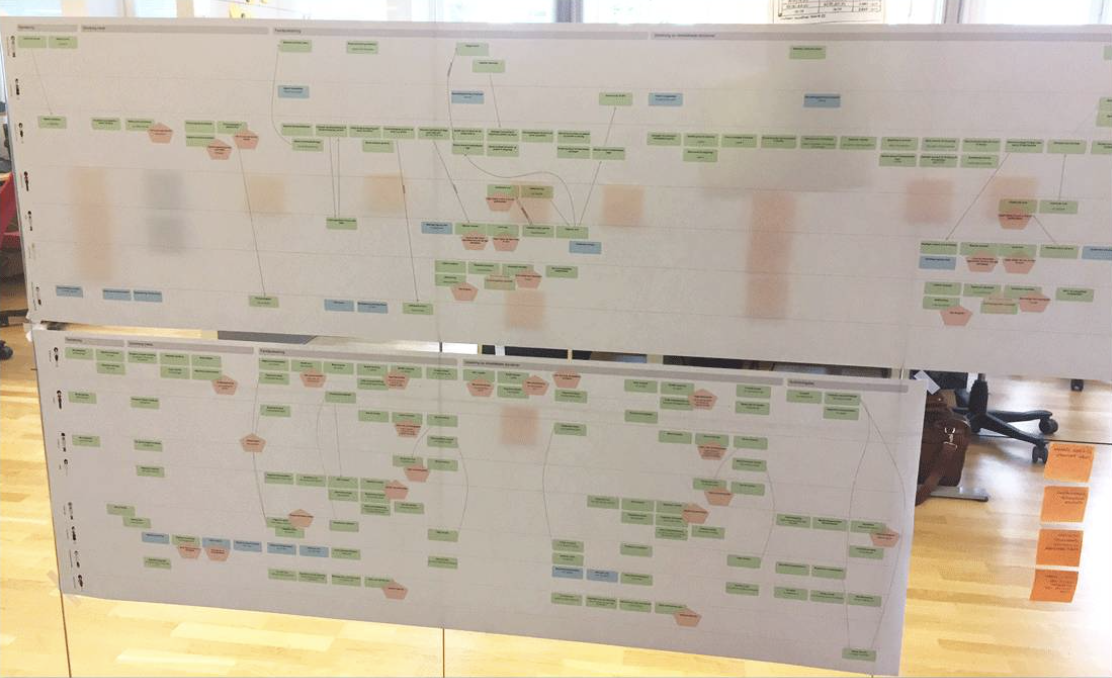
When working at a company experts at medical systems for organ donations Robin Elmersson was the Product Owner of a part of the system used to handle organ donations at hospitals across the Nordics.
The product was business, and LIFE critical, but it had become less and less user-friendly over the past 20 years, it was also getting more and more difficult and complex to develop and tweak the system. The company had been working on rebuilding it piece by piece for the past 7 years but Robin felt they needed to get more customer focus and not just build whatever the different hospitals asked them to do, or just replace existing features. He wanted to build a system that was easy to use, that really supported the medical staff, helped them do their job faster and better, and was built with the latest technology. Helping them to find the right organ faster potentially meant saving more lives. The teams had a really great purpose to drive them, saving lives. But they lacked ways of working to build the right thing.
User-Centric Methods to Work Agile
Robin started to explore different user-centered Lean UX and Agile product development methods with the support of Mia Kolmodin who was at this time coaching him and some of the other people at the company. He started to use the User Transaction Map to visualize how the same process was working at two major customers (two leading university hospitals in the Nordics).
Robin and the team had several meetings interviewing the people working in the process at both hospitals. It soon became clear what pain point they had with the current system and how they managed to get around it. It also became very clear how different the same process was at the two hospitals. At one of the hospitals the process was much longer and cumbersome than at the other hospital, even though they did the same thing.
Once they were done with the research Robin brought the two maps to a meeting with both hospitals to look at the prioritization of the product development work. They were stunned to see the visualizations. This was something they have never seen before, the full process and the interactions. And the people from the hospital with the slower process got really impressed over how much more efficient they were at the other hospital. They got inspired and decided they wanted to work more in a similar way.
This really helped Robin and the team since they then much easier could support the process and make sure to create a better user experience if it looked more the same. Also, they had much fewer problems to solve, which was what they wanted to do, not just building the same system – but actually solving the problems in the process.
The as-is map from the hospital with the faster process
The as-is map from the hospital with the slower process
How to deliver in an Agile way
Robin and the team also got a go on their suggested plan on how to deliver the product with much less time than usual, and much more customer collaboration. Robin suggested they put a machine at the hospital where they would install the new system and continuously update it and that the nurses and doctors would use it in parallel to test how it worked to give the team early feedback, instead of testing everything at the end as they had done previously.
Previously, when planning how to take on this product development in a better way Robin visualized the full end-to-end process in delivering a new piece of the product it took 4 years to make the delivery. One full year of the process was just client testing after the delivery from his company. Mia asked Robin if he knew what happened then, how did they test it? What did they do? Did they have any interactions with his company during that time? He said that he thought nothing happened for a very long time, until the end of the year when they started to test. This was clearly a wasteful process, which also made it impossible to work Agile.
The brilliant idea to put the machine at the hospital and test step by step saved them more than a year and enabled them to work Agile and deliver pieces of the product in a safe way. It also created a strong relationship between the customers and the team enabling continuous interactions and enabled them to test new solutions in a safe way instead of just building what the customer told them to. They could now work together to understand what actually was needed to meet their needs and expectations.
The User Transaction Maps of the as-is state hanging on one side of the wall where the development team sat. On the other side of the wall, close to the team they had the full User Story Map where they had mapped out the same process and the user stories they had to build to be able to deliver end-to-end scenarios throughout the process. This was the product backlog where Robin and the team continuously planned for each sprint making sure to solve all the existing user problems, without creating new ones.

